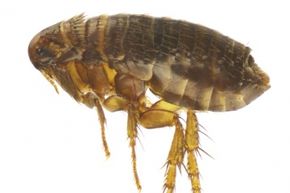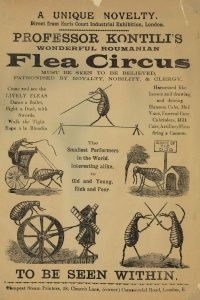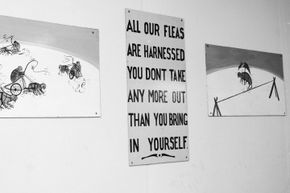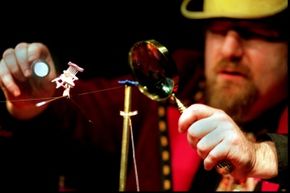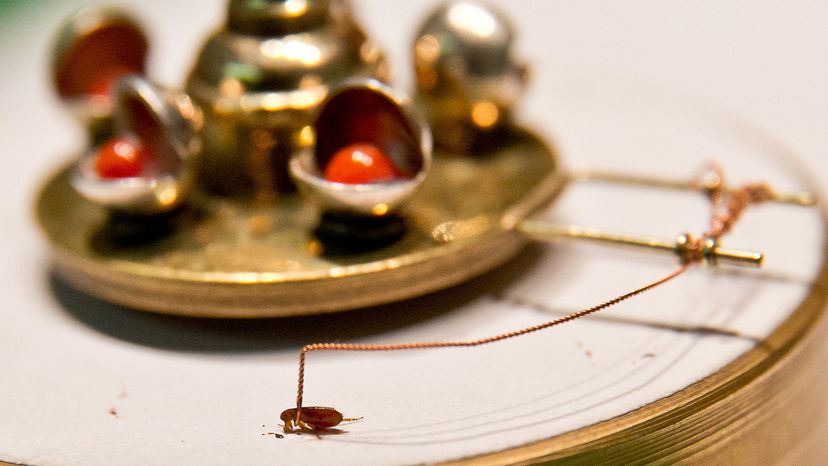
Fleas are a curse on warm-blooded creatures. The parasitic life suckers feast upon the veins of all things furry and feathered. With their piercing mouths and ravenous appetites, fleas hop around, latching onto mammals of all kinds and spreading misery in their wake. But fleas have at least one redeeming quality — they also make extraordinary circus performers.
That's right. The phrase "flea circus" isn't just a euphemism for a cheap, dilapidated movie theater. Flea circuses with live, performing fleas actually do exist, although their numbers (like the fleas themselves) are in steep decline. There are a probably a whole lot of reasons for this state of affairs in the flea circus industry, but suffice it to say that as humans have improved their hygiene and residential cleanliness over the past couple of centuries, they've become a bit more squeamish about hanging out with fleas voluntarily.
Advertisement
Let us behold the squalid lifecycle of the humble flea. Fleas love dogs (which is why flea collar sales are so phenomenal), but they'll happily treat themselves to human blood, too. They like dirty, damp environments, which are best for raising their young. After fleas gorge themselves on your vital fluid, the evidence of their feast remains in raised, red bite marks that are often itchy and may last for several weeks.
Fleas jump from host to host and they can transmit plague, typhus, tungiasis, tapeworms and more. To rid yourself of fleas, you'll probably use a variety of medicated shampoos to kill them and wash them away. To evict a truly stubborn pack of fleas, you could potentially wind up shaving off your hair.
Under perfect conditions and with regular meals of blood, Rambo-strength fleas can live more than a year, but most fleas don't make it past three months. And a tiny, select few use their short time to become famous.
Properly handled fleas are fantastic public performers, well-suited to life under the big top — or, more accurately, little top. All it takes is a little patience, human ingenuity and a few fleas with better-than-average strength and speed.
Advertisement
